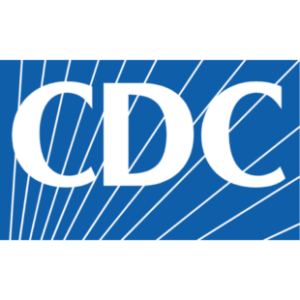Community-Wide Emergency Planning Involving Long-Term Care
| BY MARIANNA KERN GRACHEK, MSN, CNHA, FACHCA |
| Community-wide emergency planning involving long-term care The Joint Commission approach to enhancing community support of long-term care during disasters |
| The devastating loss of life caused by Hurricane Katrina, recent dire government warnings about the threat of an avian influenza pandemic, and an impending new hurricane season have prompted nursing homes and other healthcare organizations to examine their emergency-management plans and their role in community-wide disaster preparedness. As Katrina demonstrated, even those facilities with solid plans face daunting challenges when the major parts of a community’s infrastructure for medical care-water supply, sewage system, and electricity-are significantly damaged. And what happens when the transportation necessary to evacuate a frail population is disabled because of the magnitude of the disaster? The goals of emergency planning are to enable organizations and communities to care for themselves in the initial phase following natural or man-made disasters and to build on existing relationships so that each organization’s exposure to risk is minimized. This article explores the challenges of emergency planning and the strategies that can help long-term care organizations develop comprehensive emergency plans to meet real-world circumstances. Emergency Planning The Joint Commission’s Management of the Environment of Care (EC) standards require long-term care organizations to develop a management plan that ensures an effective response to emergencies, implement that plan, and help execute the plan by conducting emergency-management drills. These standards also require long-term care organizations to participate with the community in establishing priorities among potential emergencies, defining the organization’s role in the community’s emergency-management program, and linking with the community’s command structure. While recent attention has focused on the emergencies created by Hurricane Katrina, Joint Commission standards emphasize the need to consider a variety of natural or man-made events that suddenly or significantly disrupt the environment of care or change demand for the organization’s services. This broad approach could encompass, for example, damage to the organization’s buildings and grounds caused by severe windstorms, tornadoes, hurricanes, or earthquakes; loss of utilities (power, water, telephones) because of floods, civil disturbances, accidents, or emergencies within the organization or in its community; or a bioterrorist attack, building collapse, or airplane crash that might occur in the community. Long-Term Care’Specific Challenges For example, plans to address an influenza pandemic may include frequent handwashing by residents or wearing masks to prevent the spread of the infection through coughing or sneezing. However, a person with a cognitive impairment such as dementia may not be able to reliably carry out these standard precautions. Hurricane Katrina also showed that vulnerable populations such as nursing home residents can be at particular risk because they are so dependent on the good judgment of caregivers and organizational leadership. An immobile or cognitively impaired resident cannot independently escape rapidly rising floodwaters or even realize that such a danger is imminent. Therefore, when working with community leaders to plan for emergencies, it is important for nursing home leaders to detail the special needs of their residents. Areas of consideration might include: Communication. How will communication with residents be conducted during the chaos of an emergency? Those with dementia may not understand what is happening or may not react well to changes in routine. Also, how will information be shared with these residents’ families? Basic personal care functions. Nursing home residents may not be able to adequately feed or hydrate themselves and will also need special assistance with toileting or other hygiene needs during an emergency and its aftermath. Behavioral patterns. Nursing home residents may become disoriented and pose a danger to themselves or others if not in their usual secure environment. Community responders who may be assisting nursing home residents during an emergency should understand how to best aid and ensure the safety of this specific population. Using an “All-Hazards” Approach The idea is to consider the effects that specific types of emergencies will have on the organization and the community. As part of this process, it is important to remember that one type of emergency may have a cascading effect. For example, the hurricane in New Orleans did not cause as much damage as initially feared, but the resulting levee breaches caused devastating flooding that led to the loss of power, communications failures, blocked escape routes, and so forth. After compiling as complete a list as possible, the organization and the community together prioritize the emergencies based on the likelihood of each such occurrence. The areas of vulnerability that most demand community and organizational attention should be addressed in this plan. Response will require, for example, nursing homes to work in collaboration with emergency responders such as local fire and police departments and other healthcare organizations in the community, such as an acute care facility. By working together with these other experts, nursing homes can help ensure that the full spectrum of likely emergencies and contingencies has been considered and provided for. The collaboration also allows each disparate group to understand its role in a larger crisis. For example, road closures or curfews ordered by the municipality may interfere with the transit of essential nursing home staff or suppliers following a severe storm. Nursing homes should dialogue with the local police and public works authorities in advance regarding planning and communication to facilitate movement of essential staff and other resources during an emergency. Working With the Community To aid healthcare organizations and communities in this process, the Joint Commission developed a free planning guide that provides 13 essential steps that can be used to establish an effective community-based emergency-management planning and response process. While long-term care organizations should work with government leaders on this process, it is also useful to consider the 13 steps within the context of emergency-management planning for the organization itself. The steps include:
Detailed information about implementing these steps is available in the Joint Commission publication Standing Together: An Emergency Planning Guide for America’s Communities. The 2005 planning guide is the result of a two-year project that drew on expertise from two expert panels of frontline emergency responders, emergency preparedness planners, and public health and healthcare organization leaders. The free guide is available at www.jointcommission.org/PublicPolicy/ep_guide.htm. The Joint Commission’s March 2003 white paper “Health Care at the Crossroads: Strategies for Creating and Sustaining Community-wide Emergency Preparedness Systems” also provides recommended strategies for developing community-wide preparedness. This free paper is available at www.jointcommission.org/PublicPolicy/Emergency_Preparedness.htm. Conclusion Marianna Kern Grachek, MSN, CNHA, FACHCA, is the Executive Director for the Long Term Care Program at the Joint Commission on Accreditation of Healthcare Organizations. She is responsible for all accreditation activities related to long-term care services, including the development of standards and survey processes. She also serves as the liaison to national and state trade and professional organizations. For further information, phone (630) 792-5000 or visit www.jcaho.org. To send your comments to the author and editors, please e-mail grachek@nursinghomesmagazine.com. |
EC.4.10 EC.4.20 EC.7.20 EC.7.40 IM.2.30 IC.6.10 Effective July 1, 2006, revised standard EC.4.20 regarding emergency-management drills will require healthcare organizations to improve the planning and evaluation of these drills. This change is being made to help ensure that the field is conducting emergency-management drills rigorously and thoroughly. It is believed that there have been missed opportunities during drills to identify and improve weaknesses. The revised standards were derived from current literature on the characteristics of effective emergency drills and the input of two nationally recognized emergency-management experts. Based on this research, the revised standard emphasizes a continuous quality improvement approach to planning, conducting, and evaluating emergency-management drills. |
I Advance Senior Care is the industry-leading source for practical, in-depth, business-building, and resident care information for owners, executives, administrators, and directors of nursing at assisted living communities, skilled nursing facilities, post-acute facilities, and continuing care retirement communities. The I Advance Senior Care editorial team and industry experts provide market analysis, strategic direction, policy commentary, clinical best-practices, business management, and technology breakthroughs.
I Advance Senior Care is part of the Institute for the Advancement of Senior Care and published by Plain-English Health Care.
Related Articles
Topics: Articles , Facility management , Leadership , Risk Management , Staffing











